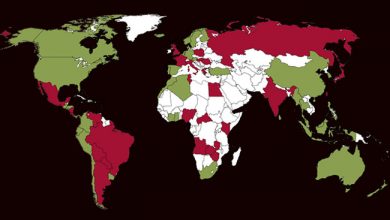UK
The Illegality of “Loss of Time Orders” Issued by the Court of Appeal

(A loss of time order dictates that some of the time that the applicant has spent in custody awaiting appeal will not count towards their sentence, effectively putting back the release date.)
- For too many years there has been a trend for the Court of Appeal to ‘award’ loss of time for what they deem appeals without merit.
- The so called ‘awards’ seem to range from 14 to 90 days and rarely any longer. Loss of time orders average at 28 days and are usually imposed in ‘non cou1sel’ applications.
- It is difficult to award loss of time when counsel advances an appeal because it would invoke the presumption that counsel was not competent and may lead to a ground of appeal.
- What are though ”loss of -time” orders and are they legal per se?
- The Court of Appeal found loss of time orders upon the Criminal Appeal Act 1968, s.2929. – (1) The time during which an appellant is in custody pending the determination of his appeal shall, subject to any direction the Court of Appeal may give to the contrary, be reckoned as part of the term of any sentence to which he is for the time being subject. (2) Where the Court of Appeal give a contrary direction under subsection (1) above, they shall state their reasons for doing so, and they shall not give any such direction where – (a) leave to appeal has been granted; or (b) a certificate has been given by the judge of the court of trial.
- The key words in s.29(1) are the legislators using the “appellant” and the “determination of his appeal.”
- For jurists who practise at the criminal bar of England and Wales will no doubt concede that a defendant only becomes an ”appellant” once leave to appeal by the Single Judge is granted?
- During the application stage, a defendant is only an “applicant” until such time as the application is evaluated and leave to appeal is granted. If refused, a defendant remains an “applicant” even before the Full Court on a renewed application for leave to appeal.
- S.29 however, clearly uses the word “appellant.” yet s.29(2)(a) clearly accentuates that no loss of time orders can be awarded if leave to appeal has been granted.
- S.29(1) also refers to the period upon which any loss of time orders can be awarded as being: “pending the determination of his appeal.
- An appeal is “determined” only after it has been advanced in Court either by: (a) counsel (non-counsel application on the papers)
- An appeal is not ”determined” until it is before the Full Court who “determine” whether to grant or refuse the appeal.
- Why, thus, is the Court of Appeal awarding loss of time for 14-90 days in regular fashion?
- It is important to note that the Criminal Appeal Act 1968 is not the first piece of legislation dealing with criminal appeals.
- There are the following: * Criminal Appeal Act 1907 * Criminal Appeal Act 1964 * Criminal Appeal Act 1966
- None of those and certainly the Criminal Appeal Act 1907 would never have considered the concept of a defendant seeking an appeal to risk ”loss of time” orders.
- Up until 1968 certain offences, specifically capital offences, there was a mandatory obligation of the Court of Appeal determining whether the conviction was safe and satisfactory.
- With the advent of truly remarkable orators/advocates at the criminal bar who were able and persuasive, it became apparent to· the Court of Appeal that some judicial barriers had to be imposed to ensure that the so-called ”guilty” had to be placed at risk when appealing and defended by the luminaries of the English Bar.
- Reviewing the discussions held in the House of Commons in Hansard, the legislators – who were not persuaded by the then Treasury Counsel – ensured that s.29 would be limited to the risk of losing only a day or so (if the judgement was reserved) and allowed for a challenge when having a conflicting Statute namely the use of the word “appellant” and then not allowing the Court of Appeal to impose loss of time on those who had obtained leave to appeal and becoming “appellants.”
- There were few loss of time awards until the then Lord Chief Justice Widgery issued a practice direction: Criminal Practise Direction (Appeal) 68E
- Widgery, CJ issued the practice direction in 1980 in essence warning counsel and using the term ”applicant”:
- The statement by Widgery, CJ stated the following: ” Both the Court and the single judge have. power in their discretion to direct that part of the time during which an applicant is in custody after lodging his notice of application for leave to appeal should not count towards sentence.”
- That was the point when Widgery, CJ and subsequently the Court of Appeal thereafter took ”a wrong turn.”
- The Criminal Appeal Act 1968 s.29 refers only to an “appellant” and not to an “applicant” and that places the Practise Direction issued by Widgery, CJ as seriously flawed and misguided.
- Following the misguided application of s.29 the Court of Appeal in following Widgery, CJ in the cases of: R -v- Hart; R -v- George; R -v- Clarke; R -v- Brown (2007) 1 Cr. App. R 31, CA: were wrongly decided following a flawed Practise Direction.
- Whether the right to liberty under Art.5 of the Human Rights Act 1998, nor the right to a fair trial under Art.6 of the same act are violated by the application of the Criminal Appeal Act 1968 s.29 was advanced in the European Courts of Human Rights in the case of: Monnell and Morris -v-UK 10 E.H.R.R.205 and the government of the UK took much comfort on a decision in its favour.
- However, what was not argued at that hearing was: Protocol N0.7 Convention for The Protection of Human Rights Article 2 Made in Starsbourg.22.XI.1984
- The problems arising from the European Convention of Human Rights is that there are regular ”protocols” and as time passes jurists and human rights 1awyers bring to the attention of the Court and legislators’ new matters.
- Protocols are rarely read by lawyers or the judiciary until such time as they are brought to the attention of the Court or if any issues arise where the law has advanced.
- The 7 Protocol Art.2 states: ” Everyone convicted of a criminal offence by a tribunal shall have the right to have his conviction or sentence reviewed by a higher tribunal. The exercise of this right, including the grounds on which it may be exercised, shall be governed by law.”
- There is a Statutory right to appeal a conviction or sentence and that right cannot be diluted with the threat of ”loss of time” awards.
- The Statute, namely the Criminal Appeal Act 1968 s.29 is crystal clear when using the word “appellant” that was transferred to “applicant” by Widgery, CJ in an exercise of erroneous and flawed judgement and followed thenceforth.
- The Criminal Appeal Act 1968 is a penal statute and as such requires strict interpretation with anydoubts.tobe resolved in favour of the defendant/accused/appellant.
- As a consequence of Widgery, CJ taking a wrong turn in misinterpreting the Criminal Appeal Act 1968 s.29 in 1980 thus followed by all judges of the Court of Appeal thence after it follows that loss of time awards/orders/directions are wholly contrary to law for the reasons stated and every single loss of time order imposed by the Court of Appeal since 1980 at the very least must be forthwith revoked.
- Further, until such time as the legislators consider or amend the Criminal Appeal Act 1968 s.29 the Court of Appeal must issue no loss of time directions.
- Jurists advising on appeals should be free to be compliant with the 7 Protocol of the ECHR which was affirmed by the United Kingdom, without the fear and/or risk of anything other than the usual harsh words by the Court of Appeal on applications that do not quite meet the necessary standards.
Giovanni Di Stefano: A9460CW, HMP Highpoint Stradishall Newmarket CB8 9YG





